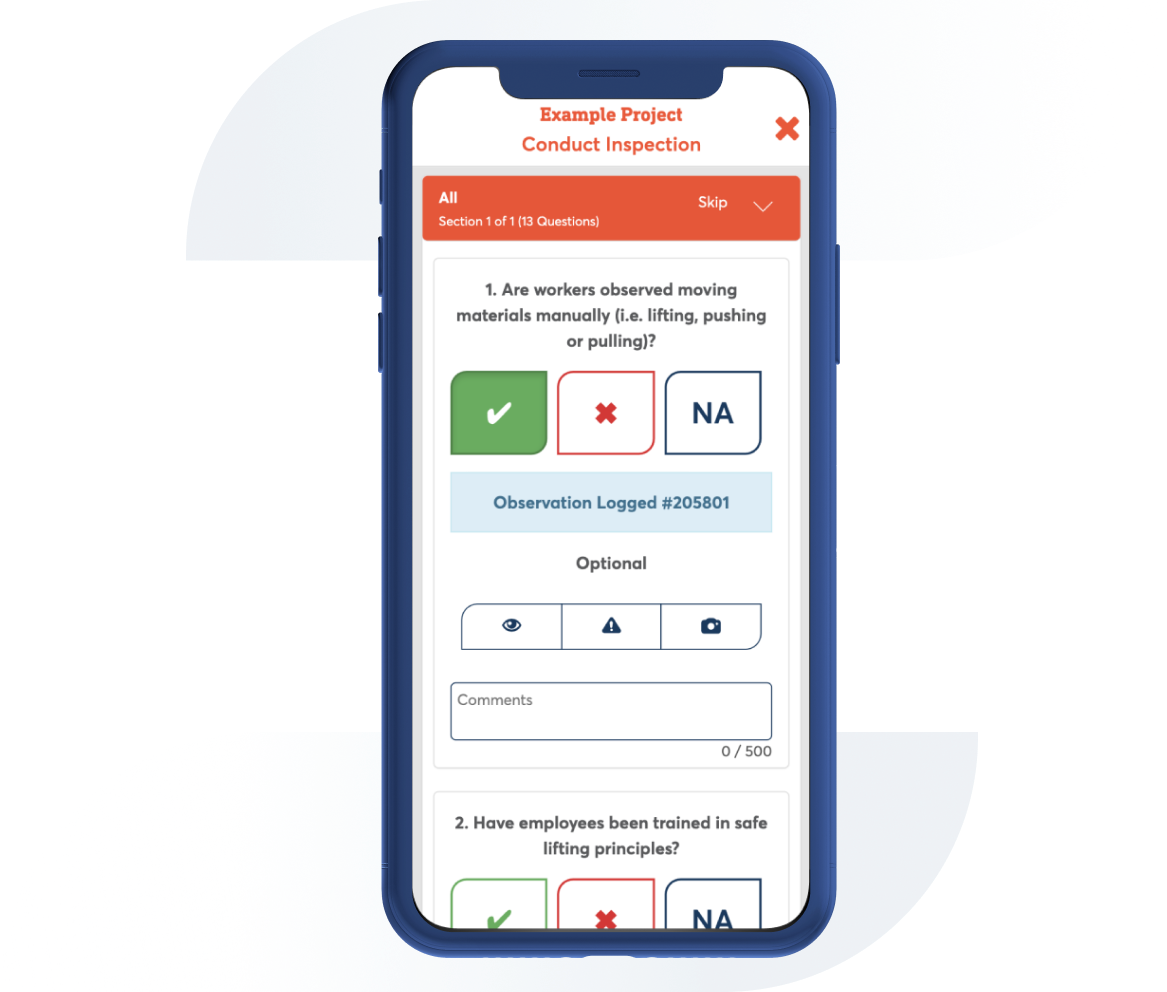OSHA Electrical Power Line Employee Safety Checklist
Contributor: Safesite Jurisdiction: OSHA
Comply with OSHA safety standards by ensuring all employees working around or near live electric power lines have been properly trained to foresee potential hazards. Satisfies 1926.1407 Subpart CC .

Template Preview
1. Are crew members and operators trained and required to determine the presence of nearby power lines before assembling or disassembling equipment?
Actions
2. Are crew members and operators trained and required to assume that all power lines are energized unless the utility owner/operator confirms that the power line has been and continues to be deenergized and visibly grounded at the worksite?
Actions
3. Are crew members and operators trained and required to determine if any part of the equipment, load line, or load (including rigging and lifting accessories) could get closer than 20 feet to a power line during the assembly/disassembly process?
Actions
4. If operating within 20 feet of overhead power lines, has it been confirmed from the utility owner/operator that the power line has been de energized and visibly grounded at the worksite?
Actions
5. Has the line voltage been confirmed with the owner/utility by a competent person and the minimum clearance distance permitted under Table A (see § 1926.1408) determined for the specific work site?
Actions
6. If necessary to operate closer than the minimum clearance distance to the power line permitted under Table A (see § 1926.1408), has the employer put special precautions in place?
Actions
7. If necessary to operate closer than the minimum clearance distance to the power line permitted under Table A, was a pre-job brief (planning meeting) conducted with the A/D Director, operator and assembly/disassembly crew and other affected workers in attendance to discuss the special precautions?
Actions
8. Are all taglines (if used) made of nonconductive material?
Actions
9. Are one or more of the following used when operating closer than the MAD: dedicated spotter in communication with the Operator, a proximity alarm or range control warning device able to warn the operator during an encroachment, an elevated warning line, barricade or line of signs in view of the operator?
Actions
10. Are crew members and operators trained and required to not allow any part of a crane/derrick, load line, or load (including rigging and lifting accessories), whether partially or fully assembled, to be below a power line unless it has been confirmed that the utility owner/operator has deenergized and (at the worksite) visibly grounded the power line.
Actions
11. Is at least one electrocution hazard warning conspicuously posted in the cab so that it is in view of the operator and (except for overhead gantry and tower cranes) and at least two on the outside of the equipment?
Actions
12.

Can't find what you are looking for?
